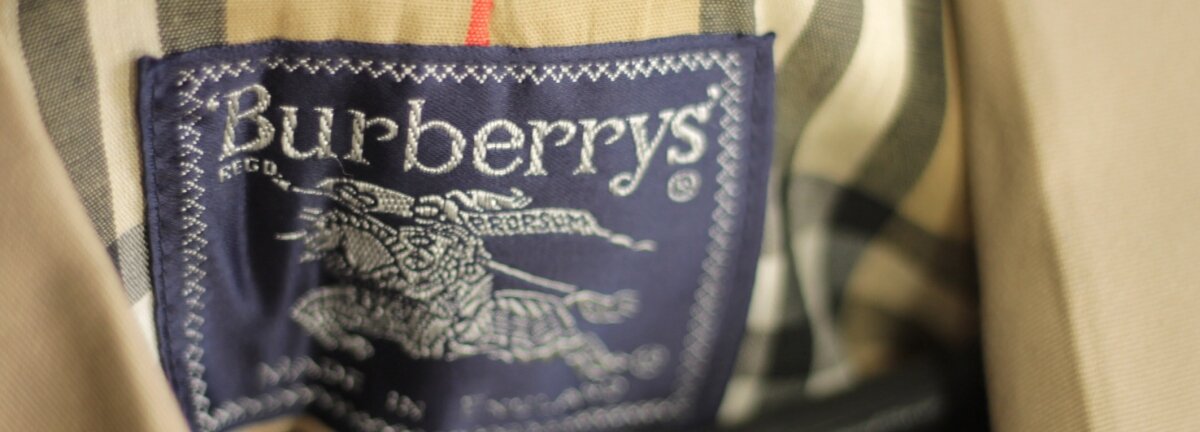Are you ready to license your brand?

Designers Yasushi Kusume and Neil Gridley have helped lead design and brand management for the likes of Philips, Electrolux and Tesco. They are also the authors of Brand Romance, a guide to building a loved brand – we asked them to share their advice on the tricky issue of brand licensing.
In branding consultant Denise Lee Yohn’s recent piece for the Harvard Business Review ‘Think Differently About Protecting Your Brand’ she explains some of the benefits and challenges of licensing your brand.
Yohn singles out Disney’s recent licensing successes, in 2012 they made $39.3bn in retail sales of licensed merchandise alone, fuelled by popularity the Marvel Comics characters, notably the rebooted Spider-Man and Iron Man series.
Yohn also gives the counter example of Burberry, which saw its brand reputation plummet, diluted by more than 23 licensees around the world. Recent years have seen a dramatic turnaround at Burberry, in part because all production was brought back to the UK under the watchful eye of designer Christopher Bailey.
Burberry saw profits soar after dramatically scaling back licensing
Licensing your brand effectively means giving another party the right to use your brand. In many cases this is through products and services that they can produce more easily than you, extending your touchpoints or adding to your propositions (product and service mix) ideally providing further brand relevance and preference.
Licensing its characters to toy manufacturers has been a huge success for Marvel
It can help you grow by using existing audiences and their brand loyalty to increase business, or it may provide the opportunity to extend brand relevance to new audiences.
Licensing is a brand is a way to create business growth for relatively low investment - but if you have taken the time and effort to grow a successful business and brand, isn’t it risky to give that to someone else to use?
If a brand is like a person, then licensing your brand is like offering someone else the opportunity to impersonate you in the hope that people believe it’s you
When you talk about a brand’s identity, most people tend to limit its scope to little more than a logo design and layout templates. We think it’s much more than that. In his book Brand Leadership David Aaker compares a brand to a person - as we suggest in Brand Romance (and our in our previous article) it’s useful to see how closely a brand resembles a human being with its own values and beliefs, which then manifest themselves in a brand’s identity.
If a brand is like a person, then licensing your brand is like offering someone else the opportunity to impersonate you, acting on your behalf in the hope that the people they meet will believe it’s you. If you think of it in this way, it’s easy to see the risks of licensing.
Our view
Our guidance is as follows:
1. If you want to build a truly loved brand, you need keep control of it.
2. If you do choose to license, how do you ensure they know how to behave? How would you ensure they do not damage your reputation?
This really highlights why a brand really needs to know itself before it can become successful, and hopefully loved – let alone license its identity to someone else to use.
Denise Lee Yohn is unequivocal ‘Ensure that you set, communicate, and deliver on your brand standards clearly and consistently in everything you do’.
So what are the ingredients you need to clearly define for your brand?
If a brand is like a person, then a brand's identity must resemble a person’s identity, which means that it’s much more than just logos and templates. And if that is so, is it possible to go further by identifying the ingredients of a human identity and, by extension, those of a brand?
Personal identity
For the purposes of our book, we used a simple four-layer structure to describe personal identity.
Factual data
This is the basic factual information about any person – such as name, age, place of birth and so on.
Beliefs and values
Beliefs are concepts that we hold to be true. Values are ideas that we hold to be important. Values govern the way we behave, communicate and interact with others. Beliefs and values determine our attitudes and opinions.
Personality and character
We believe personality is something formed by one’s values and beliefs and manifests itself through behaviour. As a result, a person will be judged by others to be the behaviour they demonstrate: funny, introverted, serious, energetic, pessimistic, confident and so on. (Warning! Most companies draw from a similar list of values which don’t say much about who they really are)
Behaviour and appearance
The Concise Oxford Dictionary of Current English describes behaviour as ‘the manner of conducting oneself’. It's fair to say though that most of us modify our behaviour and appearance to match the context we find ourselves in. Consider, for example, how you would dress and behave at a funeral or a wedding.
An absence of identity, or an inconsistent one, makes it difficult for customers to trust you.
Until you are clear on who you are, and consistently and authentically put it into practice, you cannot begin to become a loved brand – let alone license that brand.
About the authors
Yasushi Kusume and Neil Gridley are authors of Brand Romance, which will tell you how to create a truly loved brand by design. Neil Gridley is a Design Council Design Associate, one of our team of experts working hands-on with companies as part of our business support services.
The images used in this article are courtesy of Robert Sheie.
Subscribe to our newsletter
Want to keep up with the latest from the Design Council?
